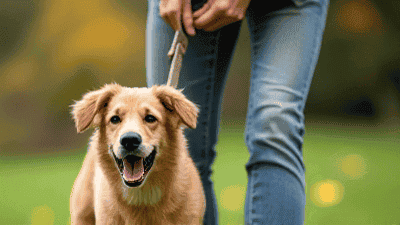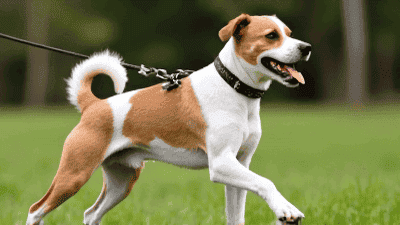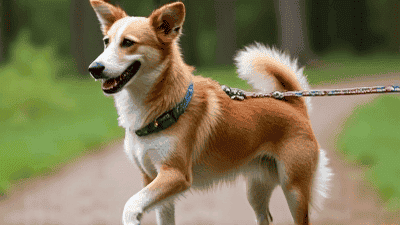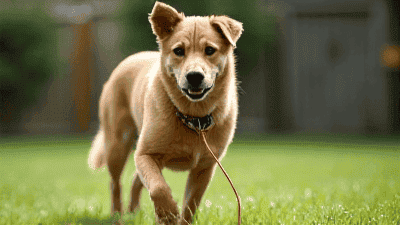
Walking your dog should be a relaxing and enjoyable experience for both of you. However, if your dog constantly pulls on the leash, it can turn a peaceful stroll into a frustrating battle of tug-of-war. Teaching your dog to walk on a loose leash is not only essential for your sanity but also for your dog’s safety and well-being.
A dog that pulls on the leash can easily slip out of their collar or harness, putting them at risk of running into traffic or getting lost. A loose leash ensures better control and prevents accidents.
Pulling on the leash can strain both your dog’s neck and your arm. Walking on a loose leash is more comfortable for both of you.
Loose leash walking is a fundamental skill that sets the stage for other obedience training, such as heel and recall.
A calm, controlled walk strengthens the bond between you and your dog by fostering trust and communication.

Dogs are naturally curious and energetic. When they see something interesting, their instinct is to move toward it as quickly as possible.
Many dogs pull on the leash simply because they haven’t been taught how to walk properly.
If pulling gets your dog to where they want to go faster, they’ll continue the behavior because it’s been rewarded.
Some breeds, like sled dogs or hunting dogs, are genetically predisposed to pull due to their working history.
A front-clip harness redirects your dog’s pulling force to the side, discouraging them from moving forward.
A flat collar works well for dogs that already have some leash manners. Avoid choke or prong collars, as they can cause harm and are not necessary for loose leash training.
A head halter provides gentle control by guiding your dog’s head, making it easier to redirect their attention.
Choose a 4-6 foot leash made of sturdy material. Retractable leashes are not recommended for loose leash training, as they encourage pulling.

Begin training in a quiet, familiar area, such as your backyard or a quiet park. This minimizes distractions and helps your dog focus.
Choose small, soft treats that your dog loves. These will serve as rewards for good behavior.
Hold the leash loosely and position your dog on your preferred side (left or right). Reward your dog with a treat and praise when they walk next to you without pulling.
If your dog starts to pull, stop walking immediately. Stand still and wait for your dog to return to your side. Reward them when they do.
When your dog pulls, abruptly change direction and walk the opposite way. This teaches your dog to pay attention to your movements.
Use the command “heel” to encourage your dog to walk by your side. Reward them when they comply.
As your dog improves, practice in more challenging environments with distractions, such as sidewalks or busy parks.
Solution: Be patient and consistent. Your dog may need more time to understand that pulling won’t get them where they want to go. Use higher-value treats to motivate them.
Solution: Practice the “look at me” command to redirect your dog’s attention. Reward them for focusing on you rather than the distraction.
Solution: Start training in low-distraction environments and gradually build up to more exciting settings. Use calming techniques, such as deep breathing, to help your dog relax.
Solution: Gradually phase out treats by rewarding less frequently. Replace treats with verbal praise and affection to maintain the behavior.

Set up two cones or markers about 10 feet apart. Walk your dog in a figure-eight pattern, rewarding them for staying by your side. This exercise improves focus and control.
Walk backward while encouraging your dog to follow you. This keeps your dog’s attention on you and discourages pulling.
Randomly pause during your walk and reward your dog for stopping and looking at you. This reinforces the idea that staying close to you is rewarding.
Consistency is key to teaching loose leash walking. Use the same commands and techniques every time you train.
Training sessions should last no more than 10-15 minutes to prevent your dog from becoming bored or frustrated.
Loose leash walking takes time and practice. Celebrate small progress and remain patient with your dog.
Regular practice is essential for reinforcing good behavior. Aim for at least one training session per day.
Begin leash training as soon as you bring your puppy home. This sets the foundation for good walking habits.
Reward your puppy for walking by your side with treats, praise, and affection.
Incorporate play and treats into your walks to keep your puppy engaged and motivated.
Even if your dog has been pulling for years, they can still learn to walk on a loose leash. Follow the same steps outlined above and be patient.
If your dog’s pulling is severe or persistent, consider working with a professional dog trainer or behaviorist.
A well-exercised dog is less likely to pull on the leash. Ensure your dog gets plenty of physical and mental stimulation through play, walks, and training.
Once your dog has mastered loose leash walking, use walks as a reward for good behavior during other training sessions.
Teaching your dog to walk on a loose leash is one of the most valuable skills you can impart. It ensures a safer, more enjoyable walking experience for both of you and strengthens your bond. By using positive reinforcement, consistency, and patience, you can transform your dog from a enthusiastic puller into a calm, well-behaved walking companion. Remember, every dog learns at their own pace, so celebrate the small victories along the way. With time and practice, you’ll be able to enjoy stress-free walks with your furry friend.